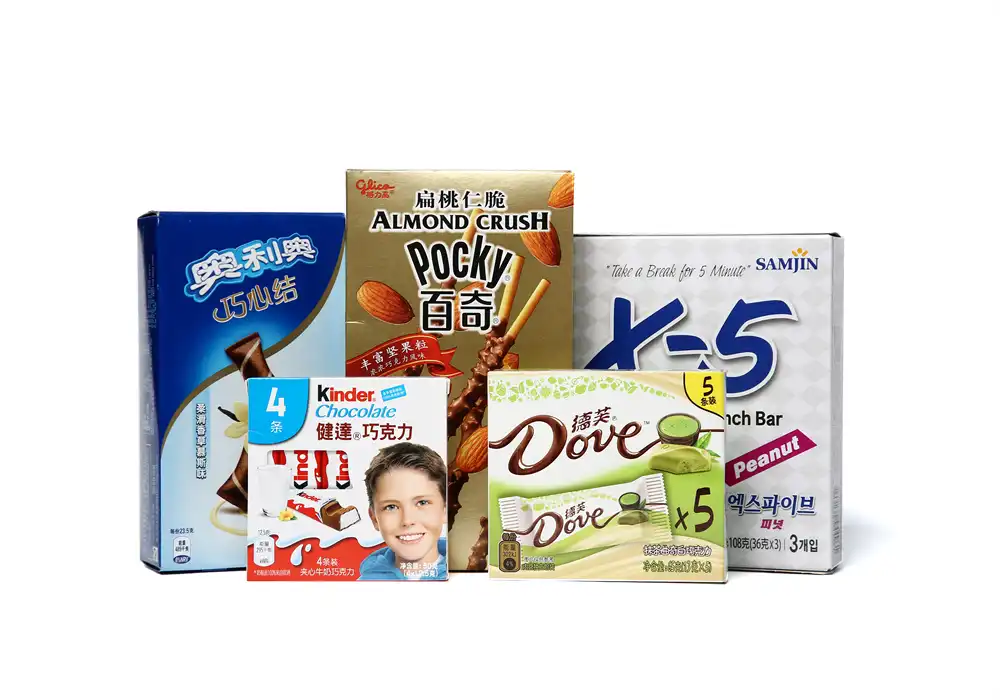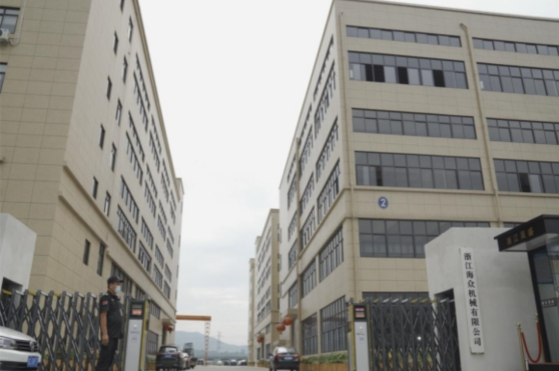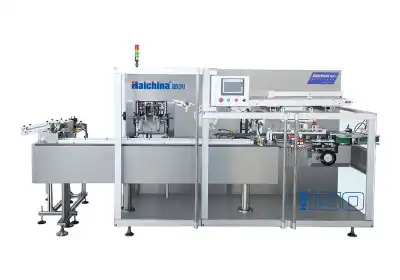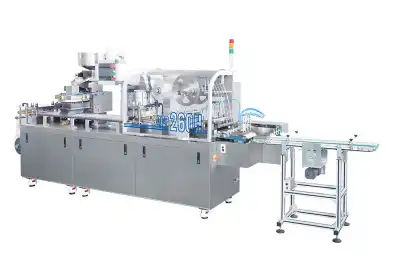Understanding Automatic and Manual Cartoners
What is an Automatic Cartoner?
An automatic cartoner is a sophisticated packaging machine designed to fold, fill, and seal cartons with minimal human intervention. These advanced systems utilize a combination of mechanical components and electronic controls to perform a series of precise operations. The process typically begins with carton feeding, where flat carton blanks are picked from a magazine and erected into three-dimensional shapes. Subsequently, the machine inserts products or items into the cartons, often using specialized mechanisms like pick-and-place robots or conveyor systems.
One of the key advantages of automatic cartoners is their ability to handle various carton styles and sizes, including sleeve, tuck-end, and crash-lock bottom configurations. Many models feature quick-change tooling, allowing for rapid transitions between different product lines. Additionally, these machines often incorporate quality control measures such as barcode scanners, weight checks, and vision systems to ensure packaging accuracy and integrity.
Automatic cartoners are particularly well-suited for industries with high-volume production needs, such as pharmaceuticals, food and beverage, cosmetics, and consumer goods. They excel in maintaining consistent output rates, typically ranging from 60 to 300 cartons per minute, depending on the model and application. This high-speed operation translates to significant productivity gains and reduced labor costs over time.
What is a Manual Cartoner?
A manual cartoner, in contrast to its automated counterpart, relies primarily on human operators to perform the carton erection, filling, and sealing processes. These systems are typically simpler in design and operation, consisting of basic workstations or tables where workers manually handle the packaging tasks. While some manual cartoners may incorporate semi-automated features like carton blank feeders or glue applicators, the core operations remain largely dependent on human skill and dexterity.
Manual cartoners offer several advantages in certain production scenarios. They provide unparalleled flexibility, allowing for quick adjustments to accommodate different product sizes or packaging configurations without the need for complex tooling changes. This adaptability makes them particularly valuable for businesses with diverse product lines or those frequently introducing new items.
Moreover, manual cartoning systems require a lower initial investment compared to automatic machines, making them an attractive option for small to medium-sized enterprises or startups with limited capital. They also occupy less floor space, which can be crucial in facilities with spatial constraints. Manual cartoners are often favored in industries where product handling requires a delicate touch or where the packaging process involves intricate arrangements that are challenging to automate.
Key Differences Between Automatic and Manual Cartoners
The primary distinctions between automatic and manual cartoners lie in their operational characteristics, production capacities, and resource requirements. Automatic cartoners excel in high-volume environments, offering consistent output rates and reducing the potential for human error. They typically require less direct labor but demand skilled technicians for maintenance and troubleshooting. In contrast, manual cartoners provide greater flexibility and are more forgiving of product variations, but their output is limited by human factors such as fatigue and skill levels.
Another significant difference is the level of initial investment and ongoing operational costs. Automatic cartoners represent a substantial upfront expense but can lead to long-term savings through increased efficiency and reduced labor costs. Manual systems, while less expensive initially, may incur higher labor expenses over time, especially in regions with rising wage rates.
Quality control and consistency also differ between the two approaches. Automatic cartoners maintain uniform packaging quality across large production runs, with integrated systems to detect and reject faulty packages. Manual operations, while potentially more attentive to individual product details, may experience variations in quality due to human factors. The choice between automatic and manual cartoning ultimately depends on a careful analysis of production requirements, budget constraints, and long-term business objectives.
Factors to Consider When Choosing Between Automatic and Manual Cartoners
Production Volume and Speed Requirements
When deliberating between automatic and manual cartoners, production volume stands as a paramount consideration. Automatic cartoners shine in high-volume environments, capable of processing hundreds of cartons per minute with unwavering consistency. This makes them indispensable for large-scale operations in industries such as pharmaceuticals, food processing, and consumer goods manufacturing. The ability to maintain high throughput over extended periods significantly enhances overall productivity and meets the demands of mass production schedules.
Conversely, manual cartoners are better suited for lower volume production or niche markets where speed is less critical. They offer flexibility for businesses with varying production needs or those dealing with seasonal fluctuations. Manual systems can be scaled up or down more easily by adjusting the number of operators, providing a level of adaptability that automated systems may lack.
It's crucial to accurately forecast your production requirements not just for the present, but for the foreseeable future. Investing in an automatic cartoner might seem excessive for current needs but could prove invaluable as your business expands. Conversely, opting for a manual system when facing rapid growth could result in production bottlenecks and missed opportunities.
Product Diversity and Packaging Flexibility
The range of products and packaging styles in your lineup plays a significant role in the cartoner selection process. Automatic cartoners excel in handling standardized products and packaging formats. Many modern automatic systems offer quick-change capabilities, allowing for relatively swift transitions between different carton sizes or styles. However, there are limitations to this flexibility, and frequent changeovers can impact overall efficiency.
Manual cartoners, by nature, offer unparalleled flexibility. They can easily accommodate a wide variety of product shapes, sizes, and packaging configurations without the need for complex retooling. This adaptability is particularly valuable for businesses with diverse product portfolios or those in industries where product customization is common, such as specialty foods or cosmetics.
Consider the complexity of your packaging requirements. If your products demand intricate arrangements, delicate handling, or frequent changes in packaging design, a manual system might be more suitable. Automatic cartoners, while highly efficient, may struggle with overly complex or frequently changing packaging demands.
Cost Considerations: Initial Investment vs. Long-term Savings
The financial aspect of choosing between automatic and manual cartoners extends beyond the initial purchase price. Automatic cartoners represent a significant upfront investment, often running into hundreds of thousands of dollars for sophisticated systems. This substantial cost can be a barrier for small to medium-sized enterprises or companies with limited capital. However, it's essential to consider the long-term financial implications.
Automatic cartoners can lead to considerable savings over time through increased productivity, reduced labor costs, and improved consistency. They require fewer operators and can run for extended periods with minimal downtime, translating to lower operational costs. Additionally, the precision of automatic systems often results in reduced material waste and improved packaging quality, further contributing to cost savings.
Manual cartoners, while less expensive initially, incur ongoing labor costs that can accumulate significantly over time. In regions with high labor rates or strict labor regulations, these costs can escalate rapidly. However, for businesses with fluctuating production needs or those in areas with lower labor costs, manual systems might prove more economical.
When evaluating costs, it's crucial to perform a comprehensive analysis that includes factors such as energy consumption, maintenance requirements, and potential upgrades. Some automatic cartoners offer modular designs that allow for future expansions or upgrades, providing a pathway for scaling operations without complete system overhauls.
Making the Right Choice for Your Business
Assessing Your Current and Future Needs
Selecting the appropriate cartoning solution requires a thorough evaluation of both your current operational landscape and future business trajectory. Begin by conducting a comprehensive analysis of your existing production processes, paying close attention to factors such as daily output volumes, product variability, and packaging specifications. This assessment should extend beyond mere numbers, delving into qualitative aspects like quality control requirements, workforce skill levels, and the intricacies of your supply chain dynamics.
Looking ahead, consider your growth projections and market trends that may impact your packaging needs. Are you anticipating significant expansion in the near future? Will your product line diversify or consolidate? Understanding these potential shifts is crucial in making a decision that not only addresses immediate concerns but also positions your business for long-term success. It's often prudent to choose a solution that offers some degree of scalability or adaptability to accommodate future changes without necessitating a complete overhaul of your packaging line.
Additionally, factor in regulatory considerations, especially if you operate in industries with stringent packaging requirements, such as pharmaceuticals or food production. Automatic cartoners often come equipped with advanced tracking and quality control features that can aid in compliance, while manual systems might require additional oversight to meet regulatory standards.
Balancing Efficiency with Flexibility
The decision between automatic and manual cartoners often boils down to finding the right balance between operational efficiency and packaging flexibility. Automatic cartoners offer unparalleled efficiency in high-volume, standardized production environments. They excel in maintaining consistent output rates, minimizing human error, and reducing labor costs. However, this efficiency comes at the cost of reduced flexibility, as these systems are optimized for specific carton sizes and styles.
Manual cartoners, on the other hand, provide maximum flexibility. They can easily adapt to changes in product size, shape, or packaging design without the need for extensive retooling or reprogramming. This flexibility is particularly valuable for businesses with diverse product lines or those that frequently introduce new items. However, the trade-off is in reduced speed and potential inconsistencies in output quality.
For many businesses, the ideal solution may lie in a hybrid approach. This could involve utilizing automatic cartoners for high-volume, standardized products while maintaining manual stations for specialty items or small batch runs. Some manufacturers offer semi-automatic systems that combine elements of both approaches, providing a middle ground that balances efficiency with flexibility.
Consider implementing a phased approach to automation if you're unsure about committing to a fully automatic system. Start with semi-automatic solutions or automate specific parts of the packaging process, allowing you to gradually scale up as your needs evolve and you gain more insights into the benefits and challenges of automation in your specific context.
Evaluating Return on Investment (ROI)
Calculating the return on investment (ROI) for cartoning equipment is a critical step in the decision-making process. This evaluation goes beyond simple cost comparisons, encompassing a wide range of factors that contribute to the overall value proposition of each solution. Begin by quantifying the direct costs associated with each option, including the initial purchase price, installation expenses, and ongoing operational costs such as energy consumption and maintenance requirements.
For automatic cartoners, factor in the potential savings from increased productivity, reduced labor costs, and improved packaging consistency. Consider how these efficiencies might translate into enhanced market competitiveness, potentially leading to increased sales or market share. Don't overlook the value of advanced features like integrated quality control systems, which can reduce waste and mitigate the risk of costly product recalls.
When evaluating manual cartoners, consider the flexibility they offer in terms of adapting to changing product lines or market demands. This adaptability can be particularly valuable in industries with rapid product cycles or seasonal variations. Additionally, factor in the potential for gradual scaling of operations and the ability to redirect human resources to other value-adding activities as needed.
It's crucial to project these costs and benefits over an extended period, typically 5-10 years, to get a comprehensive view of the long-term financial implications. Include factors such as anticipated maintenance costs, potential upgrades, and the expected lifespan of the equipment. Also, consider less tangible benefits, such as improved worker safety, enhanced brand image due to consistent packaging quality, and the potential for expanding into new markets or product lines.
Ultimately, the ROI analysis should align with your company's strategic goals and financial capabilities. While automatic cartoners may offer significant long-term savings, the high initial investment might not be feasible for all businesses. Conversely, the apparent cost-effectiveness of manual systems in the short term should be weighed against potential limitations in scaling operations as your business grows.
Conclusion
Choosing between an automatic cartoner and a manual cartoner is a decision that requires careful consideration of numerous factors. Automatic cartoners offer unparalleled efficiency and consistency for high-volume production, while manual systems provide flexibility and lower initial costs. The right choice depends on your specific business needs, including production volume, product diversity, budget constraints, and future growth plans. By thoroughly assessing your current and future requirements, balancing efficiency with flexibility, and conducting a comprehensive ROI analysis, you can make an informed decision that optimizes your packaging process and supports your business objectives. Remember, the goal is not just to meet current needs but to position your business for long-term success in an ever-evolving market landscape.
Contact Us
Ready to optimize your packaging process? Contact Zhejiang Haizhong Machinery Co.,Ltd. at [email protected] to discuss your cartoning needs and find the perfect solution for your business.





